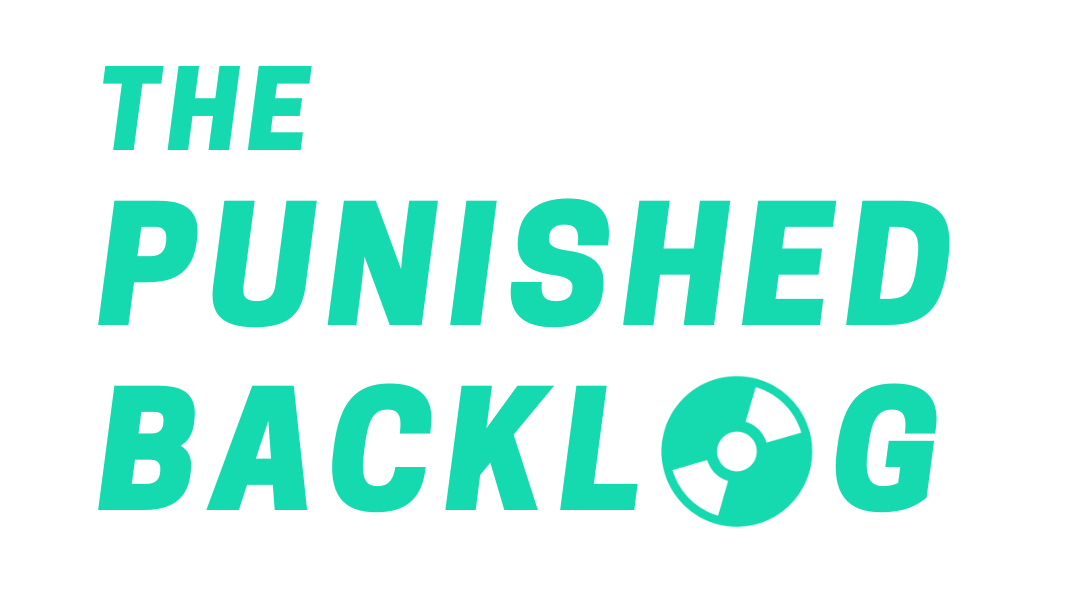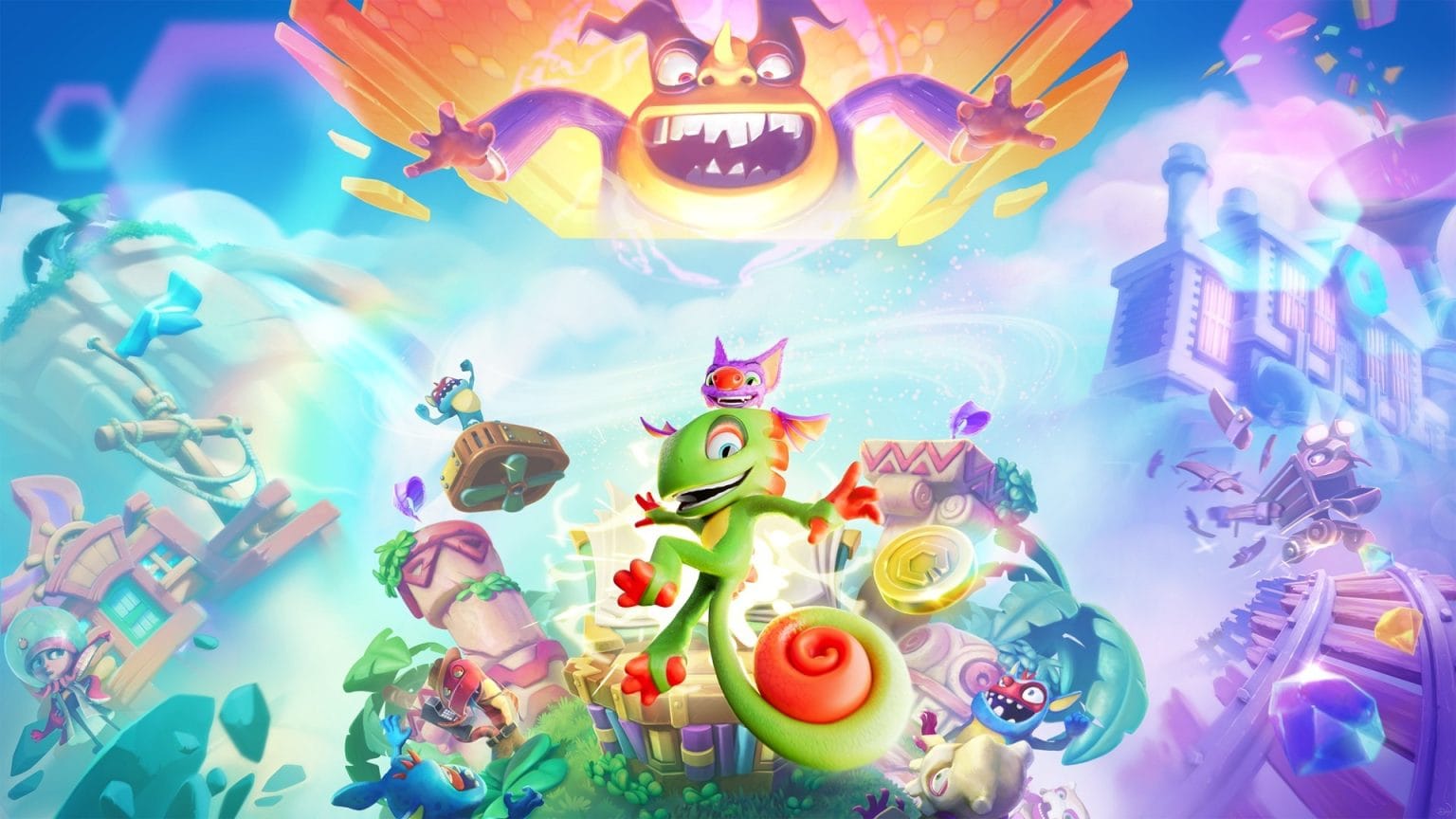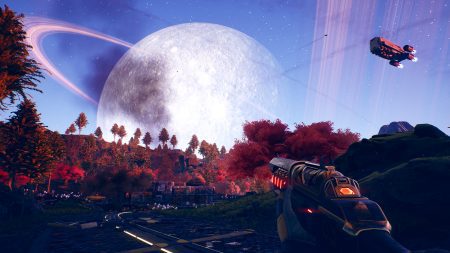In the most literal of terms, Yooka-Replaylee is a remake/remaster of Playtonic Games’ 2017 3D mascot platformer Yooka-Laylee. It takes the bones of the original indie game and gives the graphics and controls a refresh while adding a number of quality-of-life adjustments, all while maintaining the spirit and overall structure of the original.
That said, Replaylee doesn’t quite feel like a typical remake or remaster. More than anything else, it’s the rare case of a video game “do-over,” an attempt to rectify the original’s mistakes rather than just smooth over its edges. As a result, Playtonic has managed to not just create a superior version of its debut title, but present the game many wished they had played eight years ago. Simply put, Yooka-Replaylee turned a mostly fine game into a really solid one, the game the studio had clearly wanted to make in the first place.
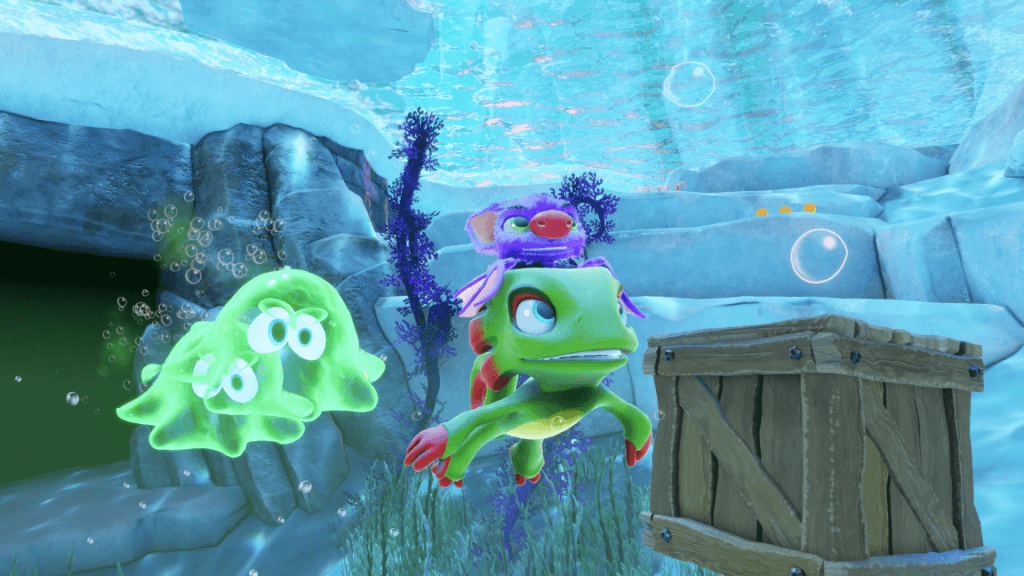
A Brief History Lesson
In order to fully appreciate Yooka-Replaylee, you have to understand the context around the original Yooka-Laylee’s release and why a remake after less than a decade felt appropriate. In August 2014, former Rare staff Steve Hurst, Steve Mayles, Gavin Price, Jens Restemeier, Mark Stevenson, and Chris Sutherland founded Playtonic Games and quickly launched a Kickstarter for a codenamed “Project Ukulele” that was described as a spiritual successor to Banjo-Kazooie. Seeing as these people had worked on Banjo-Kazooie — as well as other beloved Rare games such as Banjo-Tooie, Donkey Kong 64, and the first two Donkey Kong Country titles — it came as no surprise that the Kickstarter reached its stretch goal of $1 million within 24 hours.
Hype would continue to build for the 3D collectathon platformer that would end up being named Yooka-Laylee — featuring a chameleon named Yooka and his bat companion Laylee — as it clearly bore a resemblance not just to the bird and the bear, but to what many view as the golden age of the mascot platformer genre. To fans of games like that, myself included, Yooka-Laylee was about bringing back an era when goofy animals with an attitude dominated the medium, especially at a time when most AAA game makers had little to no interest in creating those kinds of experiences anymore. Given their history, the folks at Playtonic had earned the public’s trust to do so. If anyone could bring back 3D platformer dominance, it was them.
Conceptually, Yooka-Laylee would be very similar to Banjo-Kazooie. You had to use a particular set of platforming skills and mechanics to collect Pagies — floating golden pieces of paper with faces — which would unlock new worlds where you could, well, collect more Pagies. Each world had a distinct theme, like a haunted swamp or a giant casino, full of unique challenges. Ultimately, once you’d collected enough stuff, you had a final showdown with the evil capitalist Capital B, a large, suit-wearing bumblebee who is trying to suck up all the books in the world in order to obtain a super magical book to rewrite the universe.
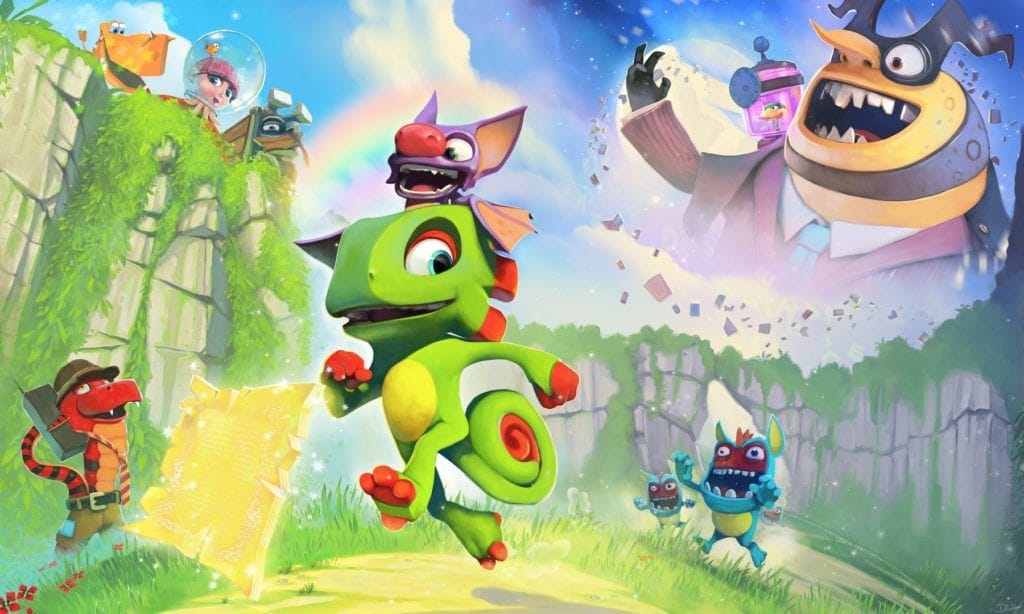
Yooka-Laylee ended up releasing in April 2017 to largely mixed reviews. On a surface level, the game felt somewhat unfinished. The camera was wonky, and not in a way that was remotely charming. The attacks and movement mechanics were mostly functional, but felt like a barely modernized version of an N64 game. Each world you jumped into had a cornucopia of cool activities and fun objects to collect, but they were never as cohesive or quite as sharp as the incredible worlds found in Banjo-Kazooie (fairly or unfairly, basically every single review of Yooka-Laylee made such comparisons).
More broadly, though, Yooka-Laylee just wasn’t really a step forward for the genre. It presented few new ideas and largely iterated on old ones. Instead of bringing about a renaissance, it served in many ways as a reminder of how much gaming had changed. Much like many other indies copycatting classic titles from the ’90s, Laylee at times appeared more like an imitation than a reclamation. It was a decent enough game on its own, but it never quite reached the highs of its inspirations decades earlier.
It certainly doesn’t help the game’s legacy that the dry spell for cartoony 3D platformers would effectively end around its release. Since Yooka-Laylee came out in April 2017, the indie space would explode with great 3D platformers that tried much more ambitious ideas, including A Hat in Time, Demon Turf, Penny’s Big Breakaway, and Blue Fire. Nintendo, long viewed as the last bastion for AAA platformers, released the fantastic Super Mario Odyssey later in 2017, would eventually push out the first ever 3D Kirby game, and even made a 3D Donkey Kong title one of the big new launch experiences for the Switch 2 just this year.
I’m not saying 3D platformers are a bigger genre now than they were 20-25 years ago, but it’s not like Yooka-Laylee was an oasis in a desert for very long.
Also, Nintendo wasn’t alone among AAA publishers in creating this pseudo-renaissance. Activision released Crash Bandicoot 4: It’s About Time in 2020 after remaking all of the PlayStation 1 Crash and Spyro the Dragon games. Sony has released three Astro Bot titles, with the most recent winning Game of the Year at the 2024 Game Awards, and also managed to find time in that stretch for Sackboy: A Big Adventure and Ratchet & Clank: Rift Apart. These aren’t even all the 3D platformers that have come out in the past eight years; they’re just the ones I can remember off the top of my head. I’m not saying 3D platformers are a bigger genre now than they were 20-25 years ago, but it’s not like Yooka-Laylee was an oasis in a desert for very long.
So, when Playtonic announced Yooka-Replaylee in 2024, I wasn’t really all that surprised. Sure, they could have gone on to make a new game in the franchise — especially since they already released a fantastic 2D platformer in the form of Yooka-Laylee and the Impossible Lair in 2019 — but it was clear they felt that Yooka-Laylee could truly be something special if they had another crack at it.
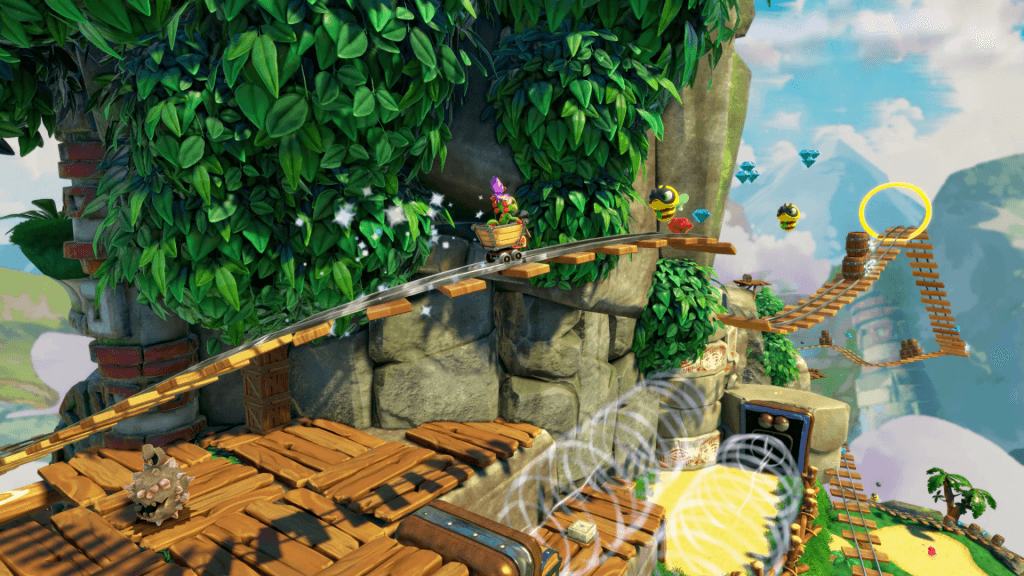
The New Bat and Chameleon
The basic structure of Yooka-Replayee is the same as its predecessor. The player goes into each world searching for Pagies and other collectibles, and must jump, tail whip, reptile roll, glide ‘n’ ride, and buddy slam their way through various enemies and hazards. While each of the five available worlds (which you enter through large books, to be clear) has its own unique gameplay segments that test the player’s mettle, such as battling a sewer kraken in Moodymaze Marsh or climbing icy slopes in Glitterglaze Glacier, every world also has a set of recurring challenges, such as minecart sections from Kartos (the God of Ore) and Rextro’s Arcade games.
For the most part, Replaylee offers the same level architecture and general gameplay loops that the original does. You’re not functionally playing a different game than Yooka-Laylee; in fact, I’ve had a much easier time progressing through this version in part because, well, I already kind of knew what to expect from each world.
Interestingly enough, a lot of the changes Playtonic made for Replaylee are fairly small on the surface, even if the results feel big at times. Obviously, the graphics are much smoother and more detailed than that of the original. The snow in Glitterglaze Glacier sparkles beautifully at every angle, and the darker cave sections in Tribalstack Tropics provide a much sharper contrast between the stony structures visible to the naked eye and the objects that only appear after illuminating the area.
Likewise, the improved camera, while obviously helping the player reorient themselves better, doesn’t quite make the monumental gameplay difference that I had expected, though maybe I just have more patience for bad cameras from all the old platformers I used to play. Moreover, the original soundtrack by legendary composer Grant Kirkhope, which was a highlight of the first game, has been orchestrally re-arranged by the Prague Philharmonic Orchestra, adding new depth to already stellar tunes, but they are ultimately the same compositions.
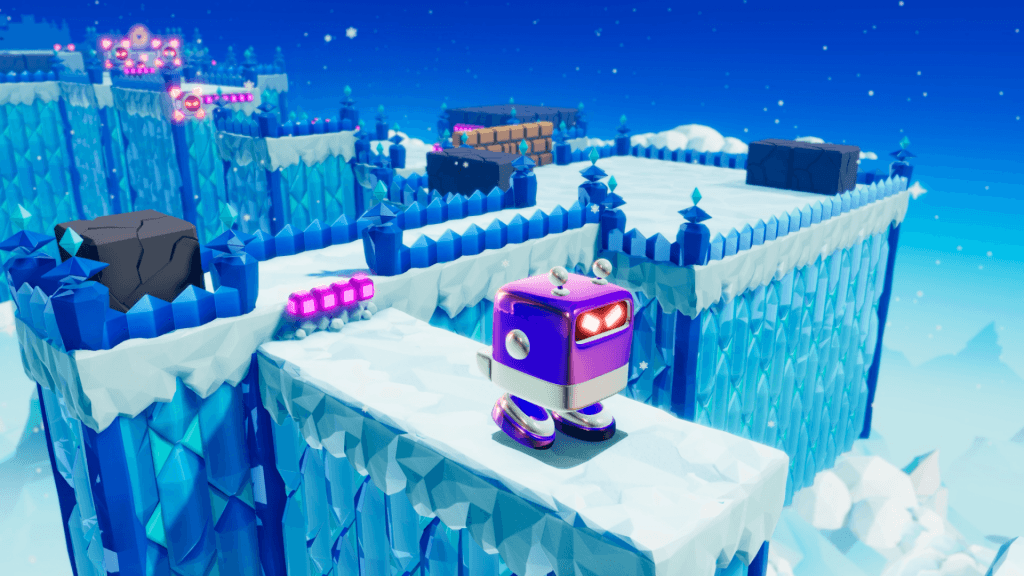
The other notable alterations, however, feel massive, and they really improve the experience in unexpected ways. Most importantly, the player gets Yooka and Laylee’s entire moveset at the beginning of the game, whereas in the original you had to buy new abilities as you progressed through each world. The moves themselves are more responsive as well, making every second of this experience at least somewhat more enjoyable than in Yooka-Laylee. Additionally, the original offered smaller worlds at the start that you could expand when you unlocked enough Pagies, but now every world you enter is expanded right from the start, making progression feel much smoother.
It’s a fascinating way to present a remake: an embellished recollection of what happened in the past, not a repetition of it.
Playtonic also added a new map and collectibles tracker, which is a boon on its own, and even added a new collectible in the form of coins (called Q.U.I.D.S. in-game) that allow the player to purchase cosmetics and other fun items. There are also new coin challenges now, where touching a red coin ring or a single green coin triggers a Super Mario-style race to collect all of the same color coin in one area within a time limit. Platformers thrive on challenging the player in short, anxiety-inducing sprints, so I appreciate Replaylee offering more of these sequences.
Even the story and pacing have received major updates, with the opening cutscene depicting the titular heroes recalling their adventure from the original, albeit with some alterations. It’s a fascinating way to present a remake: an embellished recollection of what happened in the past, not a repetition of it.
At times, all these seemingly small enhancements make the game truly sing. Even when I know I have enough Pagies to exit the world I’m in and progress through the story, I always stick around to grab a few more, just for the fun of it. Yooka-Laylee was a mostly fun time, but Replaylee for certain stretches makes me feel like I’m playing the platonic ideal of 3D collectathons; I just want to roll around, completing small challenges, meeting a goofy new set of characters (sometimes in the form of anthropomorphized shopping carts or a hologram of a T-Rex), and searching every little corner of each world for secrets and other goodies. At its best, Yooka-Replaylee is the game I had hoped the original could be all those years ago.
At its best, Yooka-Replaylee is the game I had hoped the original could be all those years ago.
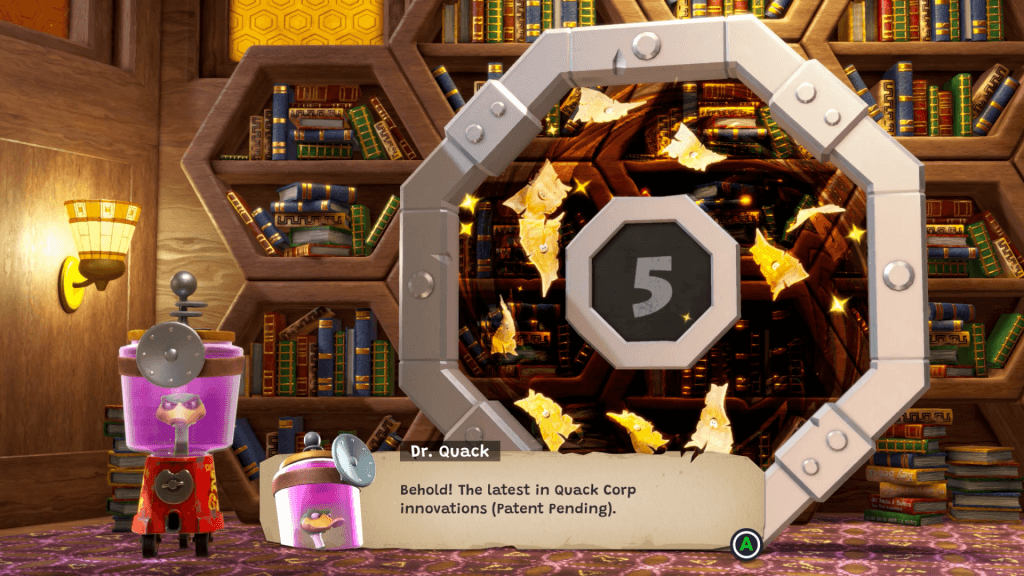
The Past Isn’t Too Far Away
By the same token, however, some of the flaws of the original Yooka-Laylee remain in the remake. Every world feels just a little too big, making the search for new collectibles a bit of a slog at times. Despite the improved camera, some segments that require a fixed camera view feel extra clunky when transitioning in and out of them. The Hivory Towers hub world can be weird and confusing to navigate, and the fact that you have access to the whole move set right away makes a lot of the hub-world challenges a little too easy, since you can do most of them right away.
The new map and collectible tracking features are a nice addition most of the time, but there’s no fast travel available, so if you want to quickly return to the entrance and buy something from Trowzer or Vendi, you either have to take the time to navigate back or exit the world entirely from the pause menu and re-enter. These are mostly minor annoyances on their own, but they pop up just frequently enough to mar the experience.
Also, despite running a smooth 60 frames per second on my launch edition PlayStation 5, Yooka-Replaylee has its fair share of choppy moments, especially during boss battles. There were also a handful of bugs that forced me to reset the game, which is never fun. I’m sure these things can be patched out later, but these instances remind me that Replaylee, even as a more polished experience, was still built on a shaky foundation.
These instances remind me that Replaylee, even as a more polished experience, was still built on a shaky foundation.
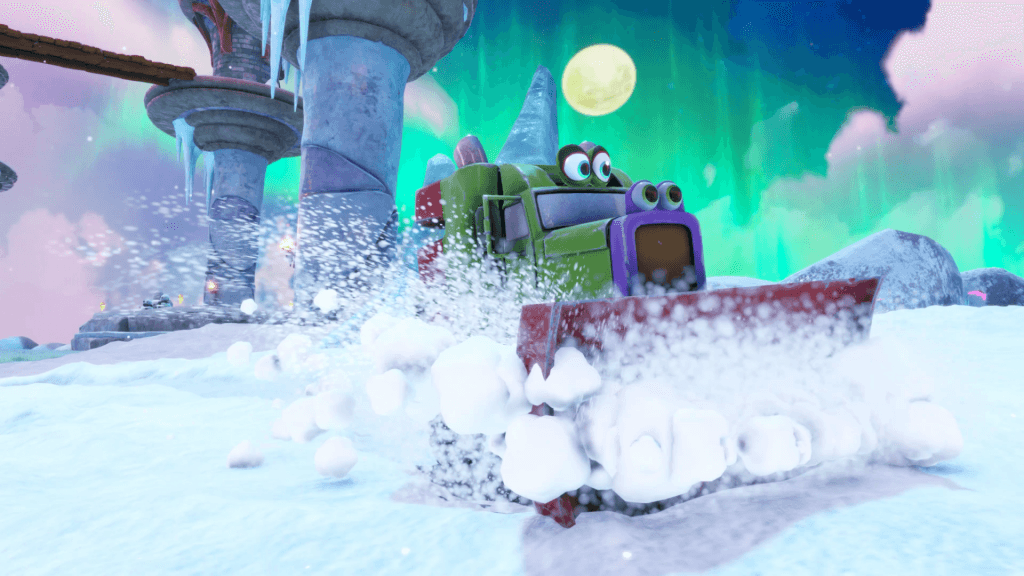
Moreover, one of the flaws with the original that remains here is that, after a certain point, the loop becomes a little repetitive. Once you’ve completed some of the “bigger” Pagie challenges in each world (i.e., boss fights, treasure hunts, platforming gauntlets), Pagie hunting just becomes content for the sake of content. I’m not exactly a completist to begin with, but I can’t see myself having the motivation or patience to collect everything in Replaylee, no matter the reward. Also, while I enjoy the cheeky nature of the dialogue with tons of self-aware jokes and references to modern gaming, it gets grating after a while, and left me longing for just a dash of sincerity.
The biggest issue with Yooka-Replaylee, though — one that can’t really be solved by better graphics and sharper controls — is that it will never truly be Banjo-Threeie, no matter how hard it tries. It has some really clever ideas — I particularly like the new-and-improved Rextro arcade games that replace the half-assed mini-games from the original — but at the end of the day, Yooka-Laylee was trying to be the next Banjo-Kazooie instead of being an evolution of it. Replaylee is a much better version of Yooka-Laylee, but even the best possible version of that idea can’t match the ingenuity of its forefathers. Maybe that’s a bit unfair, but I can’t deny that as good as Replaylee is, it’ll still never quite be the game everyone envisioned a decade ago. Frankly, I’m not sure it ever could have been.
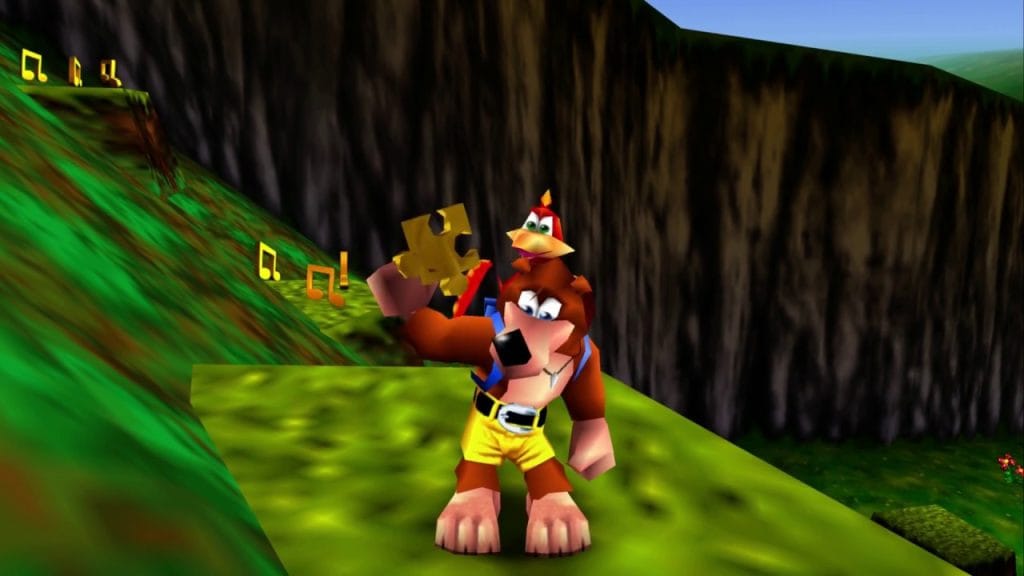
Final Thoughts
Comparisons aside, Yooka-Replaylee is a very solid 3D platformer that elevates the original in as many ways as it can. Much like any other remake or remaster, however, one’s enjoyment of this game rests partially on how much you liked the original. If you liked Yooka-Laylee, you’ll love Yooka-Replaylee. If you hated Laylee, you probably still won’t like Replaylee.
I thought Yooka-Laylee was a cromulent but uneven experience when I first played it. Yooka-Replaylee, on the other hand, is a lot of fun, and changed most of what I wished had been better about its predecessor. Sometimes, a game just needs a second chance to really shine brighter, even if some of the original blemishes remain.
Score: 7.8/10
Yooka-Replaylee, developed and published by Playtonic Games, released on October 9, 2025, for PC, Nintendo Switch 2, PlayStation 5, and Xbox Series X/S. MSRP: $29.99. Version reviewed: PlayStation 5.
Disclaimer: A review code was provided by the publisher.
Sam has been playing video games since his earliest years and has been writing about them since 2016. He’s a big fan of Nintendo games and complaining about The Last of Us Part II. You either agree wholeheartedly with his opinions or despise them. There is no in between.
A lifelong New Yorker, Sam views gaming as far more than a silly little pastime, and hopes though critical analysis and in-depth reviews to better understand the medium's artistic merit.
Twitter: @sam_martinelli.

